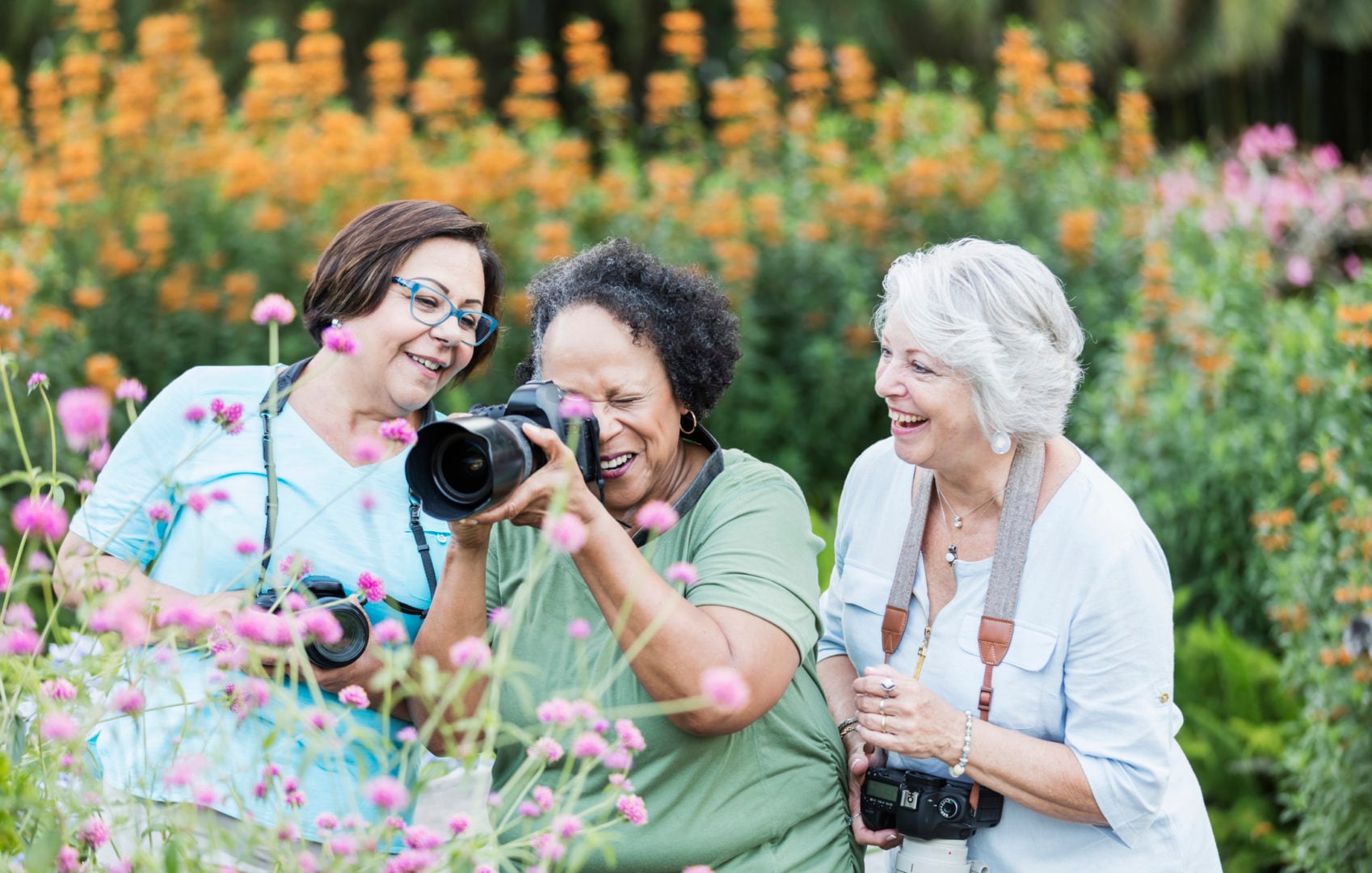When it came time for Marianne Kilkenny, 71, to decide where she wanted to retire and what her next step would be as far as living arrangement, there was no question in her mind. As a divorced woman with no children, she was determined not to end up living in a nursing home or retirement community. “I saw both of my parents go off to ‘the home,’ and they didn’t want to go there,” she says. “I watched them there, and they weren’t happy. They were not happy from day one to the day they died.”
Kilkenny, author of Your Quest for Home: A Guidebook to Find the Ideal Community for Your Later Years, felt that sending seniors off to a place where they don’t know anyone is a “brutal way to house elders.” Instead, she wanted to have a sense of control over her own future. “I decided I’ll be darned if I go to one of those places, but that means I have to come up with an alternative for me,” she explains.
After retiring, Kilkenny moved to Asheville, North Carolina, with the express purpose of encouraging older adults to live in community — and to do it herself.
After renting a home with other women, Kilkenny purchased a property that was remodeled for two or more people.The house has separate kitchens, bedrooms and entrances but a joint living space for socializing. “It’s been great, [my housemate and I] see each other by choice,” she says. “It’s touching base, but we also have our own independent lives, so I think it’s the best of all worlds for me.”
This concept of seniors moving in together and intentionally sharing a home has become known as the “Golden Girls” trend — named for the popular ‘80s sitcom in which four older, single women lived together — and it’s been gaining popularity among retired women.
Here, we dive into what it looks like to live “Golden Girls”-style and why it’s beneficial for both older adults’ health and finances.
What a “Golden Girls”-style living arrangement entails
Older, single adults interested in aging in place and preempting isolation are embracing the trend of moving into homes together. In turn, they share companionship and financial responsibilities — which can sometimes get more challenging as you age, notes Debbie Barish, a licensed clinical social worker and social work consultant for Dry Harbor Nursing & Rehabilitation Center in Queens, New York.
That said, this housing decision isn’t simply about having roommates. Each person usually has a private bedroom and bath, but, like Dorothy, Blanche, Rose and Sophia did in the show, they typically share the kitchen and living room as common space, according to Anne Glass, who holds her doctorate in Environmental Design and Planning and is a gerontology program professor at the University of North Carolina Wilmington and senior cohousing researcher.
How “Golden Girls” living differs from living in community
Although the exact terms and specific arrangements vary between housemates, “Golden Girls” living is otherwise known as home-sharing or “shared housing.” Kilkenny knows the terminology of co-living can get tricky, but is important for people to understand in order to fully grasp the different options. She breaks it down as:
-
Cohousing: In this living in community arrangement, everyone has their own individual house with a shared common outdoor space in a cohousing community. Residents maintain their own incomes and lead private lives, but they’ll also have the chance to enjoy shared meals and activities with their neighbors.
-
Shared house: This is a set-up like the “Golden Girls,” in which all of the housemates live in a single home. Housemates will split rent and often share meals or activities planned as a team.
The rising popularity of living like the “Golden Girls”
Although the number of senior adults living together is relatively small, the trend is “dramatically” growing. From 2006 to 2016, the percentage of the older population sharing their homes expanded from 1.3 to 1.8%, growing from 470,000 to nearly 988,000 older adults in this arrangement, according to the American Community Survey.
As the trend continues to gain popularity, Glass explains that it’s much more prevalent among women for a variety of reasons. “Older women are more likely to end up living alone these days, as compared to the past,” she says, due to not only being widowed, as women continue to outlive men but also higher divorce rates and having fewer or no children. “Finances are also often a driving force … so this is a way to help make ends meet,” she says.
Health benefits of shared housing for older adults
Loneliness, depression and anxiety, often brought on by living in isolation, can affect both mental and physical health as well as longevity.
And although loneliness, anxiety and depression can occur throughout a person’s life, “the impact can be more intense during old age, because they are often accompanied by a sense of hopelessness,” says H. Eva Hvingelby, a palliative care practitioner and faculty member for Walden University’s Master of Science in Nursing program in Minneapolis, Minnesota.
A 2015 study in the Journal Perspectives on Psychological Science illustrates how loneliness is directly correlated with a person’s long-term health and longevity. Loneliness and social isolation are associated with:
-
A 32% increased risk of stroke.
-
A 29% increased risk of heart disease.
-
More than a 25% increased risk for all-cause mortality.
Andrew Dowling, loneliness expert and founder/CEO of Stitch, a community for people over 50, says loneliness can also shorten lives by 15 years — ”roughly the same impact as smoking 15 cigarettes a day.” And it also impacts our immune systems.
But thankfully, social connectedness has been shown to mitigate these issues, according to a study in the BMC Geriatrics. The presence of others in the home can mitigate age-related decline by providing a richer and more stimulating environment.
“When one’s body no longer functions the same, one’s friends have passed away or there is regret about prior choices, it’s easier for despair to set in,” says Hvingelby. “Sharing a home with others pulls seniors into the moment and gives them events to look forward to such as making dinner together or watching and then talking about a movie.”
Financial perks of shared housing for older adults
Although there are plenty of health benefits, financial pressure might be what brings some older adults to consider this option, explains Glass. “Many people cannot afford housing with [in-home care] services, so this could be a more cost-efficient way to gain some support,” she says.
A couple other key financial points to consider:
You’ll save on your cost of living and get more bang for your buck. Sharing a home you own allows you to save on your mortgage, tax and maintenance by collecting rent, says retirement advisor Greg Klingler, Director of Wealth Management at Government Employees’ Benefit Association. And if you aren’t a homeowner, renting with a housemate allows you to pool money and afford a nicer unit while still splitting any communal costs.
Shared housing can bolster the affordability of in-home care. The cost of senior care continues to skyrocket. Although the cost of care varies by location and the level of assistance needed, according to the most recent Genworth Cost of Care Survey, the national average for an in-home health aid was $4,576 a month or $54,912 a year.
Klingler points out that not only will sharing a home make it possible to split this cost, but many care providers also require blocks of at least four hours. “Having multiple people in a home may allow the cohabitants to more efficiently use this care,” he notes.
How to know if “Golden Girls” living is right for you or your loved one
Kilkenny says that some people get into the thinking that living with someone will benefit them financially, but she urges anyone considering shared housing to be motivated by the whole picture which includes intentional friendship. “If someone wants to just rent out a room, that’s just a landlord/tenant type of situation — not what the ‘Golden Girls’ were like,” she says.
That said, she recommends thinking about the benefits and the drawbacks of the arrangement from a “bird’s eye view.” Only then will you know if it is right for you or your aging loved one.






